Related Research Articles

The dissolution of the monasteries, occasionally referred to as the suppression of the monasteries, was the set of administrative and legal processes between 1536 and 1541 by which Henry VIII disbanded monasteries, priories, convents, and friaries in England, Wales, and Ireland, expropriated their income, disposed of their assets, and provided for their former personnel and functions. Although the policy was originally envisaged as increasing the regular income of the Crown, much former monastic property was sold off to fund Henry's military campaigns in the 1540s. He was given the authority to do this in England and Wales by the Act of Supremacy, passed by Parliament in 1534, which made him Supreme Head of the Church in England, thus separating England from papal authority, and by the First Suppression Act (1535) and the Second Suppression Act (1539). While Thomas Cromwell, Vicar-general and Vice-regent of England, is often considered the leader of the Dissolutions, he merely oversaw the project, one he had hoped to use for reform of monasteries, not closure or seizure. The Dissolution project was created by England's Lord Chancellor Thomas Audley, and Court of Augmentations head Richard Rich.

Sir Walter Mildmay was a statesman who served as Chancellor of the Exchequer to Queen Elizabeth I, and founded Emmanuel College, Cambridge.

Richard Rich, 1st Baron Rich, was Lord Chancellor during King Edward VI of England's reign, from 1547 until January 1552. He was the founder of Felsted School with its associated alms houses in Essex in 1564. He was a beneficiary of the Dissolution of the Monasteries, and persecuted perceived opponents of the king and their policies. He played a role in the trials of Catholic martyrs Thomas More and John Fisher as well as that of Protestant martyr Anne Askew.
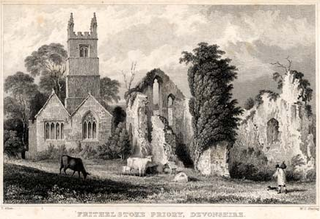
Frithelstock Priory was founded in about 1220 at Frithelstock, Devon, England, by Sir Robert de Beauchamp for Augustinian Canons Regular, as an indulgence to ensure intercessions for the repose of his soul. Walter de Stapledon, Bishop of Exeter, is considered a co-founder, for increasing the priory's endowments.

A royal forest, occasionally "Kingswood", is an area of land with different definitions in England, Wales, Scotland and Ireland. The term forest in the ordinary modern understanding refers to an area of wooded land; however, the original medieval sense was closer to the modern idea of a "preserve" – i.e. land legally set aside for specific purposes such as royal hunting – with less emphasis on its composition. There are also differing and contextual interpretations in Continental Europe derived from the Carolingian and Merovingian legal systems.
A chantry is an ecclesiastical term that may have either of two related meanings:
- a chantry service, a Christian liturgy of prayers for the dead, which historically was an obiit, or
- a chantry chapel, a building on private land, or an area in a parish church or cathedral reserved for the performance of the "chantry duties".

Beeleigh Abbey near Maldon in Essex, England, was a monastery constructed in 1180 for the Order of Canons Regular of Prémontré, as known as the Norbertines or Premonstratensians. The order linked the change of the separate life of monks in the 12th century with the retrospective life of the friar, who was considerably more active.
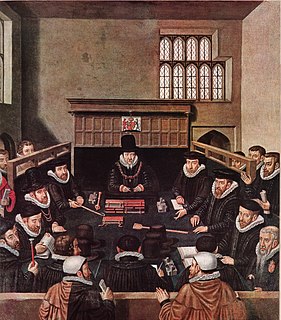
The Court of Wards and Liveries was a court established during the reign of Henry VIII in England. Its purpose was to administer a system of feudal dues; but as well as the revenue collection, the court was also responsible for wardship and livery issues.
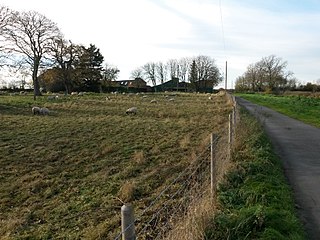
Broadholme Priory was a convent of canonesses of the Premonstratensian Order located near to the village of Broadholme. Historically in Nottinghamshire, since boundary changes in 1989, the priory and village has been in Lincolnshire.
The Court of Augmentations, also called Augmentation Court or simply The Augmentation, was established during the reign of King Henry VIII of England along with three lesser courts following the dissolution of the monasteries. Its primary function was to gain better control over the land and finances formerly held by the Roman Catholic Church in the kingdom. It was incorporated into the Exchequer in 1554 as the augmentation office.
Wintney Priory was a priory of Cistercian nuns in Hartley Wintney, Hampshire, England.

Wulfric, called Wulfric Spot or Spott, was an Anglo-Saxon nobleman. His will is an important document from the reign of King Æthelred the Unready. Wulfric was a patron of the Burton Abbey, around which the modern town of Burton on Trent later grew up, and may have refounded the Benedictine monastery there.
The suppression of monasteries refers to various events at different times and places when monastic foundations were abolished and their possessions were appropriated by the state.
Patrick Barnewall was a leading figure in the Irish Government of the 1530s and 1540s. He owed his position largely to his close links with Thomas Cromwell. He sat in the Irish House of Commons as MP for Dublin County, and held the offices of Solicitor General for Ireland and Master of the Rolls in Ireland. Today he is mainly remembered for his role in founding the King's Inns. He belonged to a junior branch of the family of Lord Trimlestown: his own descendants held the title Viscount Barnewall of Kingsland.
The former Priory of Douglas was a Cistercian monastery of nuns on the Isle of Man, apparently founded in the reign of Rǫgnvaldr Guðrøðarson, King of the Isles.

Sir Richard Pollard, was Member of Parliament for Taunton in 1536, and for Devon in 1540 and 1542. He played a major role in assisting Thomas Cromwell in administering the Dissolution of the monasteries.
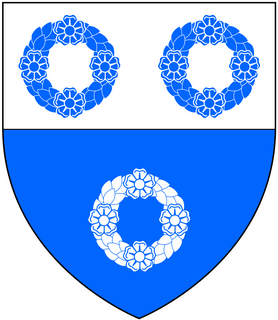
Richard Duke was a lawyer and served as Clerk of the Court of Augmentations which position assisted him in acquiring large grants of former monastic lands in the West Country following the Dissolution of the Monasteries. He served as MP for Weymouth in 1545 and for Dartmouth in 1547 and as Sheriff of Devon in 1563–64.
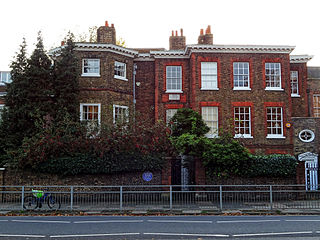
The Old Court House is a Grade II* listed house located off Hampton Court Green in the London Borough of Richmond upon Thames; its origins date back to 1536. The architect Sir Christopher Wren, who lived there from 1708 to 1723, was given a 50-year lease on the property by Queen Anne in lieu of overdue payments for his work on St Paul's Cathedral. The lease passed from Wren's son to his grandson. It was purchased from the Crown Estate in 1984.
Geoffrey Chamber was a legal advocate, an associate and agent of Thomas Cromwell's, and was Surveyor and Receiver-General to the Court of Augmentations at the time of the Dissolution of the Monasteries. He was connected with the discovery of the mechanical contrivances in the Rood of Grace at Boxley Abbey.
References
- Joyce A. Youings. "The Terms of the Disposal of the Devon Monastic Lands, 1536-58", in: The English Historical Review; Vol. 69, No. 270 (Jan. 1954), pp. 18–38